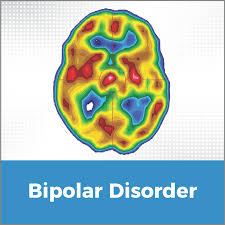
Do I Have Bipolar Disorder
Bipolar disorder is also known as a manic depression because a person’s mood can alternate between the poles. They could be experiencing a mania (high feeling) and depression (low feeling). Those that suffer from bipolar disorder experience extreme changes in mood, behavior, energy as well as thought. These moods or feeling can last for months, weeks, days or just hours.
Whom Does Bipolar Affect
There are at least close to 6 million adults in America that suffer from bipolar disorder. Most of time, people experience bipolar during their late adolescence years. . Nevertheless, it can happen to people later on in life. Men and women suffer from this disease at the same level. This mood level affects all races, ages and classes of people. This disease can have a negatively affect your job, family, spouses and friends if you don’t get control. Also, it can lead to financial problems.
Types Of Biplor
- Bipolar Disorder 1: This type of bipolar is characterized by one or more manic episodes. They normally last a minimum of a week. Also, most of the time a hospital visit is required. Also, a person may experience hypomania and depression.
- Bipolar Disorder 2: This type of bipolar is characterized by one or more depressive episodes accompanied by at least one hypomanic episode. However, the hypomanic episodes don’t that long.
- Cyclothymic Disorder: This is characterized by chronic mood fluctuations that do not reach the level of a full manic or depressive episode. However, this illness could cause problems in your personal relationship, school, job and with family.
Bipolar Symptoms
- Symptoms Of Mania
- Reckless behavior
- Increased Sex Drive
- Racing speech, ideas and thoughts
- Easy to get irritated
- Sleeping Problems
- Get Tired Easy
- Heightened mood
- Increased mental and physical energy and activity
- Symptoms Of Depression
- Prolong feeling of sadness
- Big changes in your appetite
- Changes in sleeping habits
- Easy to become angry and agitated
- Problems with anxiety
- Loss of energy
- Feeling worthless
- Difficult to make decisions
- Suicidal thoughts and death thoughts
Treatment For Bipolar:
Bipolar is a treatable illness. There are therapies for bipolar disorder. Psychiatrists are often needed as well as a general practitioner. Victims may also have to take medications. They will probably also have to attend support groups and talk therapy groups so that they can process and express their feeling.
List of Bipolar Medications
Anti-convulsants, also known as anti-seizure medications, are sometimes used as mood stabilizers in bipolar disorder.
- Carbamazepine (Atretol, Tegretol, Epitol)
- Divalproex Sodium (Depakote, Epival)
- Gabapentin (Neurontin)
- Lamotrigine (Lamictal)
- Oxcarbazepine (Trielptal)
- Topiramate (Topamax)
- Valproic Acid Depakene, Depakote, Valproate, Epival)
First generation antipsychotics, also known as typical antipsychotics
- Chlorpromazine (Thorazine)
- Haloperidol (Haldol
- Fluphenazine-prolixin, permitil
- Flupenthixol-fluanxol
- Zuclopenthixol-clopixol
- Aripiprazole (Abilify)
- Clozapine (Clozaril)
- Olanzapine (Zyprexa)
- Risepridone (Risperdal)
- Ziprasidone-geodon
Antidepressants: Selective serotonin reuptake inhibitors, or SSRIs, are antidepressants that are commonly prescribed for major depressive disorder, but can also be prescribed for a bipolar depression. The SSRIs include:
- Citalopram(Celexa)
- Escitalopram(Lexapro, Cipralex)
- Sertraline(Zoloft)
- Fluoxetine(Prozac, Sarafem)
- Fluvoxamine(Luvox)
- Paroextine (Paxil)
- Amitriptyline (Amitrip, Elevil, Endep, Levate, Amitril, Enovil)
- Amoxapine (Asendin)
- Clomipramine (Anafril)
- Desipramine (Norpramin, Pertofrane)
- Doxepin (Sinequan)
- Imipramine (Tofranil)
- Nortriptyline (Aventyl, Pamelor)
- Trazodone (Olepro, Desyrel)
- Phenelzine (Nardil)
- Moclobemide (Manerix)
- Tranylcypromine (Parnate)
Benzodiazepines depress a person’s central nervous system and are used to treat anxiety, insomnia, and seizures. Benzodiazepines have different half-lives, meaning some are short-acting, intermediate-acting, or long-acting. They include:
- Alprazolam (Xanax, Novo-alprazol, Nu-alpraz)
- Clonazepam (Klonopin, Rivotril)
- Chlordiazepoxide (Librium, Libritabs)
- Diazepam (Valium)
- Flurazepam (Dalmane)
- Lorazepam (Ativan)
- Oxazepam (Serax)
- Temazepam (Restoril)
- Triazolam (Halcion)
Best Regards,
Frankie Muhammad
